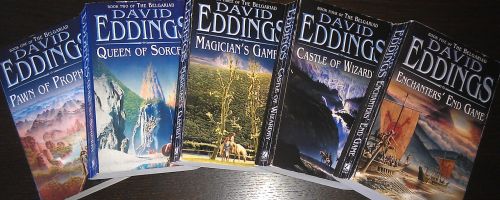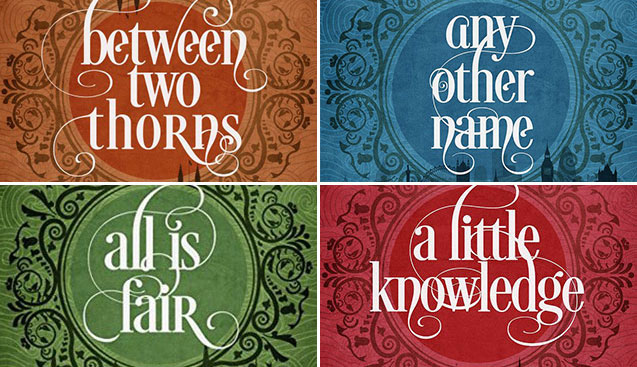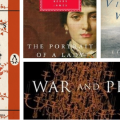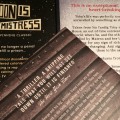Having been racing my way through many SFF book series, I started to note the differences amongst how they approach certain issues of construction – how they deal with the continuing story, individual novels as part of a larger whole, and how much expository ‘calling back’ is done with each new series entry. Readers might come to a series long after it is published, binge reading it like a prose-heavy Netflix series, or they may be twiddling their thumbs between the publication of each installment. Depending on how a reader decides to consume a book series, the author may want to employ different techniques in prose or narrative.
Of course, no author can predict how their readers will choose to approach their work, but is there a way to hedge your bets and provide the best possible approach for all styles of readership? Should we be encouraging simultaneous publication for binge reading? How do we avoid exposition dumps in subsequent installments if readers may not remember the content of previous titles? And how should you balance the need to keep the reader guessing – and as a result, returning for more books – while still providing closure at the end of each individual series entry?
To binge, or not to binge
 While most books in a series are published separately from one another, there is a growing trend for publishers to hold on to an author’s series and publish all entries together, one per year, or even in quick succession. Jeff Vandermeer’s Southern Reach Trilogy is a great example of a strategically staggered release, with the three installments being released in February, May, and September of 2014. Is the increasing popularity of releasing book series in quick succession a product of the binge watching culture bleeding into the book market?
While most books in a series are published separately from one another, there is a growing trend for publishers to hold on to an author’s series and publish all entries together, one per year, or even in quick succession. Jeff Vandermeer’s Southern Reach Trilogy is a great example of a strategically staggered release, with the three installments being released in February, May, and September of 2014. Is the increasing popularity of releasing book series in quick succession a product of the binge watching culture bleeding into the book market?
I’m surprised it has taken so long for the publishing industry to catch on to this idea. After all, if a reader has enjoyed a book, surely you want to build on that momentum. They finish one book and want to keep reading about those characters! But if the next book doesn’t come out for another year – or several (I’m actually looking at Brandon Sanderson here, not George R. R. Martin, but they are both guilty of this) – will the readers remember the content for the next installment? Will they seek it out or will they have moved on? It is certainly easier for established series and brands, but for those trying to break into the market, momentum is everything.
Jogging your reader’s memory
Should writers include expository notes buried within the prose of successive novels? If a reader is coming to the next installment after having read the previous book long ago, those hints of ‘last time on…’ are very helpful. I don’t know if my reading habits are particularly representative of the majority, but I generally end up reading book series long after its original release. I will sit down and read that series – and nothing but that series – until I’m done (similarly, I’m a natural binge-watcher). And when I do so, having each book recapitulate the same basic world-building principles and character backstories is at best tedious, at worst patronising.
But unless books start universally publishing books in a series simultaneously (or at least in quick succession), it is arguable that these recaps are necessary. Why is it better (assuming that, since it tends to be done this way, it has been decided upon somewhere up on high as the thing to do) to have repetitive callbacks to previous narrative content embedded within the text rather than take an approach much like a TV show’s opening recap? Readers could read the recap if they needed to refresh their memory or skip it if they don’t.
When it comes to re-reading a beloved series or binge reading a series initially released sporadically, the constant reminders are irritating, pulling the reader out of the story. Where there are fan edits of films, I suggest that if writers insist on continuing to write this way, we get fan remixed manuscripts, removing all the extraneous memory aids that pad later books in a series. Readers are smarter than you give them credit for – and if they don’t remember what came before, it isn’t unreasonable to expect them to go back and re-read the previous novels (after all, they clearly enjoyed it if they are back for more).
An ongoing story vs. discrete tales
I recently started reading Emma Newman’s Split Worlds series and it occurred to me (as I read one after another, barely pausing for breath) that they didn’t feel like discrete novels. Instead, each book felt more like an episode of a television series – enough of a story arc for 42 minutes while playing into a season arc. None of the books finished with any real feeling of closure. Ordinarily, this style would annoy me – and I think it will once I get to the end of the currently available entries – but it also worked very well for binge reading.
In a book series, you want there to be questions left unanswered so that readers come back for more, but each novel should stand alone as its own entity, shouldn’t it? Trilogies are often the worst offenders when it comes to finding closure at the end of each series entry. Middle novels often suffer from feeling like they are only the middle of a story (which they are!), with no completed arc within that installment and simply acting as a set-up for the big finale. Take The Two Towers, for instance. It feels like less of a novel and more like an intermission between two big acts. This recurrent issue isn’t surprising; the ‘flabby middle’ is a problem for individual novels/stories, so a flabby middle book is to be expected.
Not all series are concerned with an ongoing story or the same characters, however. For instance, Al Robertson’s Station series shifts the focus onto different characters within the same world, where the larger impact of the previous novel impacts the world in the next book, the characters don’t feature. Becky Chambers’ Wayfarers series works along similar ways. These series, while having each individual novel feel legitimate in and of themselves, they may run the risk of alienating readers who want more from the characters they have already come to know and love.
Like anything within the creative arts, there are no hard and fast rules when it comes to writing a book series, but there are certain things writers can do to avoid the more irritating pitfalls.
 Pop Verse Pop Culture Universe
Pop Verse Pop Culture Universe








